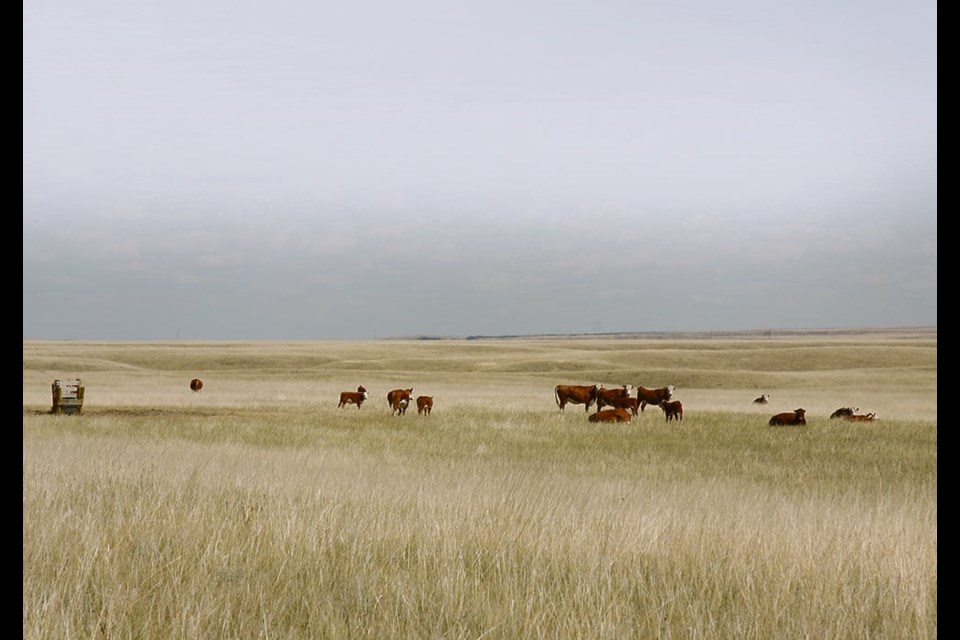WESTERN PRODUCER — Grasslands might not capture the imagination of the public like the Rocky Mountains, the lakes of Manitoba or the rugged terrain of the Canadian Shield but efforts are underway to acknowledge the native prairie’s role in preventing climate change.
“Climate change is happening and that’s because of carbon in the atmosphere,” said Cameron Carlyle, associate professor of rangeland ecology at the University of Alberta. “Globally, rangelands hold 30 percent of soil carbon.”
But outside of conservation easements, which seek to protect diminishing rangelands, a formula to award carbon credits to those who steward the land to maintain that naturally stored carbon and even enhance that ability of the soil to absorb it, remains elusive.
Chad Macpherson, general manager of the Saskatchewan Stock Growers (SSG), said there are efforts to address the issue, notably a Canadian Forage and Grassland Association program.
But that requires an easement.
“I don’t know if there has been a lot of uptake. It might be a bit of a top up for somebody who already has an easement, a little bit of a carbon payment as well,” he said.
SSG is also starting its own conservation easement program, which endeavours to provide some incentives to maintain rangeland. But regulatory hurdles remain.
“I think we’re a bit of a ways away because there is a lack of quantification of the credit’s recognition,” said Macpherson.
But he added the Saskatchewan government has funded projects that will try to quantify just how much carbon is being stored in native rangeland as well as how grazing practises could enhance the ability of the soil to store more through the Saskatchewan Research initiative (SRI).
Macpherson said that project and another being conducted the University of Saskatchewan Sustainability Living Lab continue to work on the issue.
“Between the two of those (projects), we should get some pretty good information on what practices work to enhance carbon sequestration and what the rate is. From there, hopefully we have enough data to be able to develop protocols to compensate producers,” he said.
The obstacle is figuring out just how much additional carbon would be stored by cattle producers.
Carlyle, who is part of the SRI study, said, “we’ve shown that grasslands that have cattle on them store about 12 percent more carbon than grasslands that don’t have cattle on them.”
Additionally, the study looked at grazing practices.
“We do have evidence that some specific management practices would have the ability to add more carbon into the soil,” he said.
The financial cost of validating such results is prohibitive, said Carlyle, who said the price would be more than what a producer would receive from a carbon credit.
“There is quite a bit of effort and I’m aware of start-up companies in Alberta, North America and Europe that are trying to solve that validation program problem and bring down the costs of verifying the amount of carbon stored in soils,” he said.
Done right, Carlyle said some of the data collected so far shows intensive rotational grazing can lead to a small increase carbon storage of grassland soils, as well as the range producing more forage.
“We’re starting to identify grazing management practices that can help put more carbon in the ground. On our end, it’s about refining our understanding of that so we can give more specific recommendations to producers in a specific region,” he said.
But while research continues, Carlyle said public policy changes are also needed.
Carlyle, who attended the recent COP15 summit on biodiversity in Montreal, said there is broad agreement on the goal of protecting 30 percent of the world’s land and oceans by 2030 and grasslands, which feature numerous species at risk fit into that concept.
“Because they are recognizing these multiple services that are being provided by grasslands and that there is an emphasis on both biodiversity and carbon, that might provide some impetus at higher levels to try to move these things forward,” he said.
Macpherson said if producers are going to be charged a carbon tax on the energy they use, it’s only fair the industry should be given a credit on the carbon they keep from the atmosphere.
“We see it as an opportunity as a way to break even or potential revenue,” he said. “But we don’t have the data to be able to get the protocols developed to be recognized and compensated for the stewardship producers are providing,” he said.

